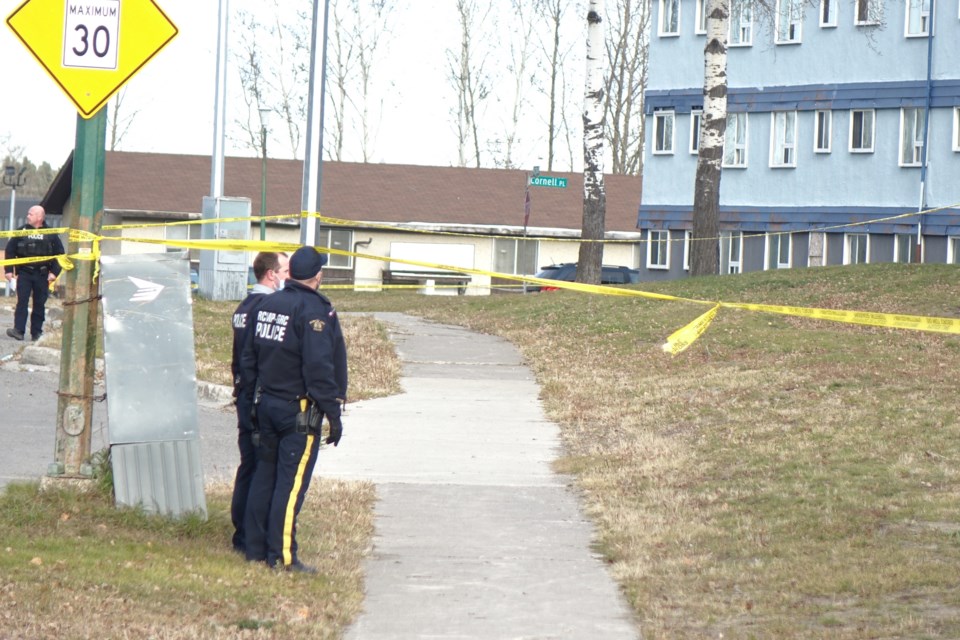At the time this editorial was written, a few hours after a Thompson RCMP officer shot a man on Princeton Drive in the middle of a Monday afternoon, not a great deal about the incident was known.
Police said the victim was a 30-year-old man who an officer encountered while delivering legal documents on Oct. 25. An RCMP news release says that man was armed with a knife, but a video of the shooting posted on social media didn’t appear to show him brandishing it menacingly at the time he was shot. It isn’t clear in the video, taken from a balcony across the street, on a cell phone, it appears, that the man is even holding a weapon. The victim was being treated at Thompson General Hospital for a serious injury and the Independent Investigation Unit of Manitoba (IIU), which looks into serious allegations and incidents involving on- and off-duty police officers in the province, had been notified of the shooting.
The IIU’s report into the second most recent death in Thompson to which RCMP officers were connected – the February 2020 death of a woman who was in RCMP cells after being detained for public intoxication, took about 20 months to be made public. No charges were recommended in that case, as the woman’s death was attributed to intercranial bleeding, possibly the result of a head injury she is said to have suffered when she fell off a stool in McDonald’s and struck her head against the floor.
If the probe of Monday’s shooting results in charges against the officer who fired his weapon being laid, the IIU’s report wont be released until after that theoretical charge has been dealt with by the court system and all appeals exhausted or their respective deadlines passed. In that case, it could be years before the details of how the officer ended up shooting the 30-year-old are revealed by the IIU, though they will have come out in court before then.
Looking at the video, many people have said that the shooting was unnecessary and perhaps they are right. The man who was shot didn’t appear to be moving quickly and reasonable people can look at the incident and surmise that the officer had time to avoid the man who was approaching him, or that they could have tried to neutralize the perceived threat by using other means, such as a conducted energy weapon (commonly referred to as a taser), assuming they were armed with one and trained in its use.
On the other hand, police are given a lot of leeway by the justice system and the Criminal Code of Canada when it comes to using lethal force. If the officer legitimately fears for their safety, they are basically allowed to deploy force to protect themselves, even if the threat turns out to have been less serious than they may have thought. In legal terms, it is subjective, not objective. The feeling doesn’t have to be accurate in order to be considered legally defensible. Although it may not have looked to some observers like the officer was in danger, police are usually trained to consider anyone with a weapon within 20 feet of them to be a threat, and backing up into the road while trying to maintain separation from the man who was walking toward them could have made the officer feel that they were in danger of being hit by a passing vehicle, unless traffic was blocked at the time of the incident and the officer knew it.
It has been several years since a Thompson RCMP officer shot someone while on the job. In that case, even though the officer had taken numerous unnecessary risks during his pursuit of a drunk driver and ended up shooting the driver at least nine times and also shooting a passenger in the vehicle at the same time, a judge found him not guilty of manslaughter. Many citizens of Thompson felt that was not the correct decision, but it has not been reversed. It’s very likely that the same could be decided in this case, or even that it be ruled a justified use of force and no charges recommended. Only time will tell.





